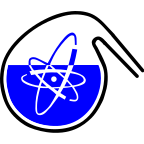Speaker
Description
In the technological system of high-burnt irradiated nuclear fuel reprocessing that is being developed, before entering the affination phase, all the reductant from the previous phase of reducing reextraction must be deconstructed and the Pu(III) must be oxidized to Pu(IV). For this process a reagentless oxidation method using an activated carbon catalyst (VNIITU-1) was proposed. As a result of this catalytic oxidation, gas evolution occurs on a large scale, which in turn points to an organic reductant oxidation.
The tests to determine the composition of the gas phase were conducted in 2 to 4 mol\L [HNO3] at 40 ⁰С. The plutonium reductants used were carbohydrazide (0.05-1 mol\L) and diformylhydrazine (0.1-1 mol\L). The examination of the composition of the solution, flowing out of the catalytic column, in search of non-decomposable catalytic discharge was conducted. Data regarding the quantity and composition of the gas phase in a measure of reductant was obtained. The specters of this gas phase were recorded and analyzed by use of a Fourier-transform spectrometer.

